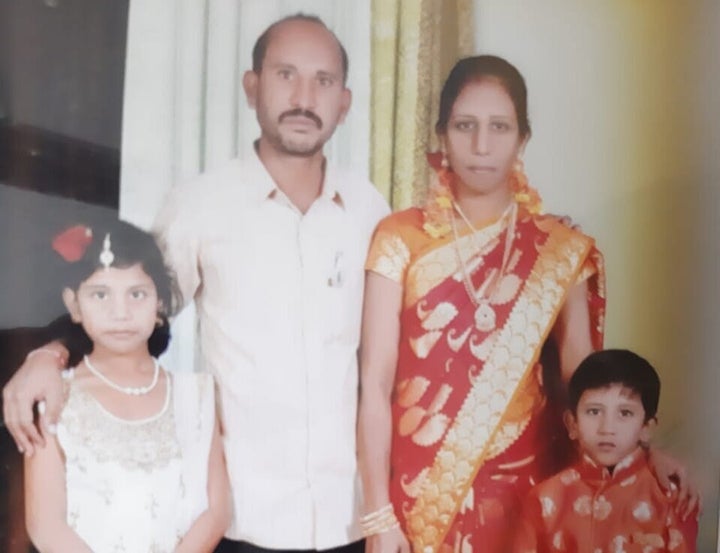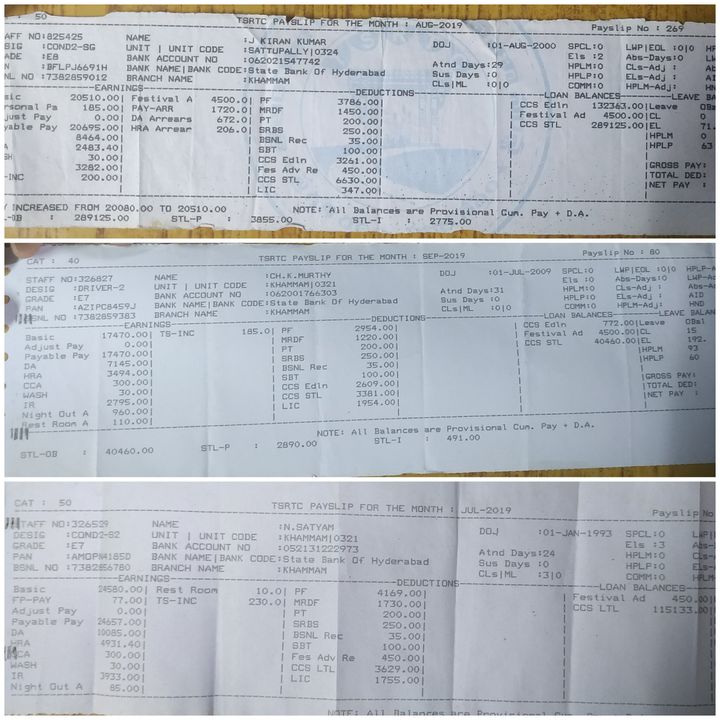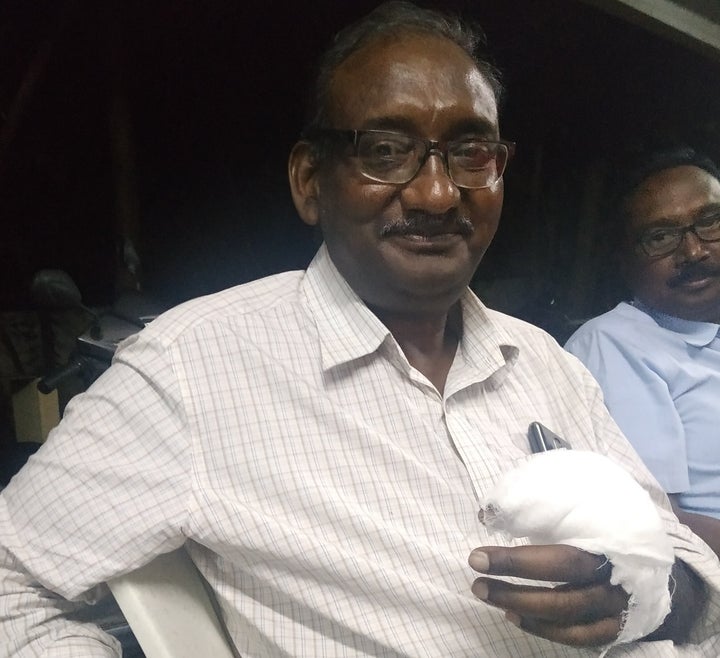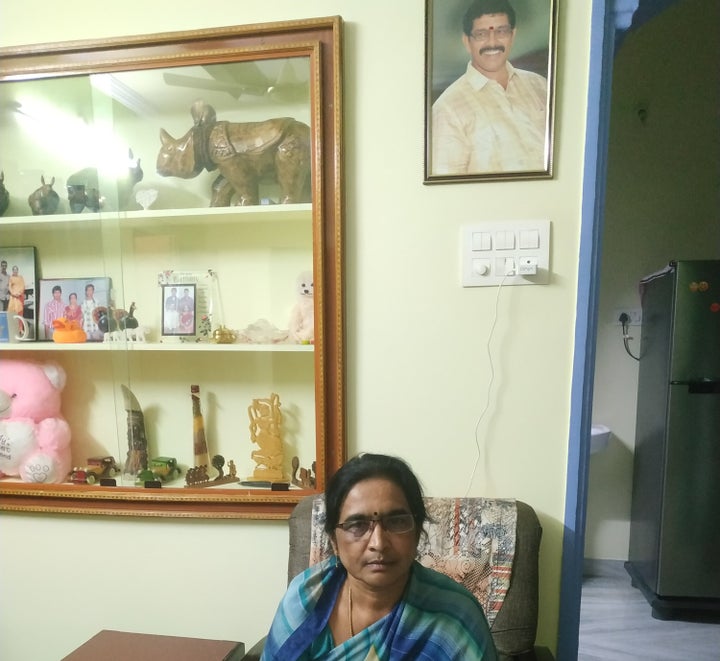
KHAMMAM, Telangana — On Diwali night this year, 32-year-old K Neeraja, switched on the television in her cramped rented apartment in Telangana’s Kaviraj Nagar in this town 200 km from Hyderabad, and hung herself from the ceiling fan. Her husband, B Rajashekar found her body the next morning, suspended above a confetti of shredded paper payslips from Telangana State Road Transport Corporation (TSRTC).
An RTC employee for eight years prior to her suicide, Neeraja earned a gross salary of Rs 25,000 per month, of which her take-home was Rs 13,000 per month. A day after her suicide, RTC workers across Khammam revealed their pay slips in solidarity: N Sathyam who has been working as an RTC driver for 28 years draws a gross pay of Rs 44,261; J Kiran Kumar, another driver who has worked for 20 years draws a gross pay of Rs 42,252; Ch K Murthy draws 32,489; D Padmavathi, a female conductor with 24 years of service draws Rs 31,380; S Ramalaxmi, another conductor with 16 years of service draws Rs 21,105.
Taken together, this mosaic of payslips was intended as a response to Telangana Chief Minister K Chandrashekar Rao’s claim that RTC employees draw huge salaries averaging Rs 50,000 per month.
For the latest news and more, follow HuffPost India on Twitter, Facebook, and subscribe to our newsletter.
“No one can save the RTC,” the Chief Minister said at a press conference on 24 October, 2019, as he pushed for the privatisation of 20% of the corporation’s operations.
On Saturday November 2, the Telangana government announced it had decided to privatise these routes. All bus routes in Telangana would be privatised, the government said, unless striking workers returned to work by November 5.
Over 50,000 RTC workers have been on strike since 5 October to demand better pay, job security and a financial revamp of the TSRTC. On 7 October, Chief Minister Rao said he had ‘sacked’ 48,000 striking workers of the corporation, declaring they had “self-dismissed” themselves by not turning up for work. The strike, Rao insisted, was “illegal”.
A Dalit woman, Neeraja was one among the workers who was ‘fired’.
She worked as a conductor and ticket collector at the Sattupalli depot in Khammam and was the first person from the Madiga community in her village to get a government job. Her death, the fourth suicide by an RTC worker in the past month, is illustrative of the death of the Telangana dream — the vision of government employment, better pay, job security and land for the landless that had motivated thousands like Neeraja to fight for a separate state.

The Telangana nightmare
Neeraja’s husband Rajashekar was working as a daily wage labourer at the Venkateswara Granite quarry at Kanapuram when his wife got a job as an RTC conductor in 2011. At the time, most young men and women from the Madiga community in their village, Sadashivapuram held low paying private jobs or worked as labourers either in farms or in granite quarries.
In September that year, soon after Neeraja began work on a salary of Rs 6,000 per month, the RTC employees went on strike to demand statehood for Telangana. Neeraja was among the striking workers who stood up to police excesses in Khammam between 13 September and 24 October, a time when the agitation was led by K Chandrashekar Rao, who was then a leader of Opposition. In June 2014, when Telangana state was finally carved out of Andhra Pradesh, she attended the celebrations in Khammam town.
K Chandrashekar Rao and the Telangana Rashtra Samithi (TRS) came to power for two consecutive terms in the state’s Legislative Assembly in 2014 and in 2018, but Neeraja’s village remained under-developed with no primary health centre, government school or public bus service.
As a bus conductor, she woke up each day at 3.30 am to catch a private auto-rickshaw or bus to travel the 15 km from her village in Sadashivapuram to Khammam, and then to Sattupalli to get to work. When her two children reached school-going age the family moved into a rented home in Khammam and enrolled them in private schools paying an annual fee of Rs 30,000 per child.
“She used to leave for work at 5 am to Sattupalli depot and return at 9 pm. She was awarded the best conductor of the depot this year,” Rajashekhar, her husband, said.
In his press conference in October, Chief Minister Rao had publically chided RTC employees for shirking work. “This is your corporation. Won’t you work a few more hours to make it profitable?” he said.

RTC workers say they have consistently put in overtime duties in a bid to save the corporation.
“During the Telangana agitation, KCR said he was a kin to all workers. After he ascended the CM’s chair he has become dictatorial,” said P Ranga Rao, a state leader with CPI-ML (New Democracy), who was injured during police action on striking RTC workers in Hyderabad. “I asked KCR if my injured hand is an acknowledgement for the support CPI-ML offered during his fast unto death in 2009”.
A pattern
On 17 October, TSRTC officials submitted a bankruptcy plea before the High Court of Telangana. The corporation, which has to pay Rs 239 crore in salaries each month, said it had only Rs 7 crore in its coffers. In an affidavit filed as a reply to a petition filed by Telangana Jatiya Mazdoor Union, Sunil Sharma, principal secretary for state transport, had submitted before the High Court that TSRTC had incurred losses amounting to Rs 5,269 crore over the years.
“Earlier anyone who works for 12-hours was considered to have done overtime. Now we are made to work 15 hours a day to claim overtime pay of Rs 700, ” said K Srinivas Reddy of Telangana Jatiya Mazdur Union (TJMU) who is a driver at Khammam. “After doing overtime work, we hardly get rest as we are asked to work the very next day.”
When the strike began on 5 October, the workers had not expected the government to turn a deaf ear to their pleas. After all, KCR was the political face of the Telangana agitation; many thought he would agree to their 26-point charter of demands which included a merger of TSRTC with the government.
Even after the CM ‘sacked’ workers the strike employed all strategies of the T-agitation. D Srinivas Reddy, a 56-year-old driver who was the first to kill himself on 12 October, believed he would become a martyr for the RTC cause, his family said.
“On the day he went to the Khammam depot to participate in the strike and told his colleagues that he would do something which will help the agitation. In the evening he poured petrol and set himself on fire. He succumbed to 90% burns,” his wife, Savithri Reddy told HuffPost India.
In the government hospital where he was taken, Reddy had shouted slogans in support of the strike and demanded the government to take back the workers whom he had sacked.
Reddy’s death was of a pattern: Between 2009 and 2014, several people including students and workers had similarly committed suicide demanding statehood for Telangana. The TRS used each death to further intensify the agitation.
When the TRS swept the bypolls in Huzurnagar constituency on 24 October despite the best efforts of the RTC unions, some of the striking workers appeared to lose heart.
Neeraja seemed visibly disturbed on 24 October, Rajashekhar said.
“She was worried that she will lose her job. She was worried for the future of our children and kept a watch on the news each day. I tried to reassure her saying I too am earning but for her, the job was very dear,” he said.

The Khammam district administration has promised Neerja’s family a two bedroom apartment, three acres of land, Rs 7 Lakh and free education for the two children, as ex-gratia. Her daughter Poojitha said, “Mother called me to say ‘Sleep well. Bye. Goodnight. That’s all’”.
The two children are currently in the care of Rajashekhar’s mother and an elder sister who is a widow with two children.
Standoff continues
The strike drags on, the Telangana government has hired private buses and temporary workers and shows no sign of giving in.
“Life has come to a standstill after her death. Only the government has not changed its stand on the RTC strike,” said Neerja’s husband, Rajashekhar.
Apart from the four workers who killed themselves, 12 other employees including conductors and drivers have reportedly died of cardiac arrests in the past month.
On 30 October, a driver from Karimnagar district N Babu died of cardiac arrest while attending a huge meeting organised by the workers unions in Hyderabad. On Friday, the Joint Action Committee stalled his cremation demanding the government to respond to their demands.
As the standoff between the workers and the government is expected to continue in November, a Warangal based conductor V Veeranna who joined the RTC in 1990 explained the striking workers’ agenda to an eager audience in a crowded Satavahana express.
“TSRTC does public service and provides bus facilities to the remotest villages,” he said. “If the government privatizes the RTC the public will suffer.” The RTC unions claim 4000 villages are cutoff thanks to the strike.
Veeranna had boarded the train to Hyderabad to attend the TSRTC Sakala Janula Bheri, a public meeting by striking workers.
“The CM wants the employees to leave the workers unions,” Veerana said. “We will do that if he leaves his TRS party and contest as an independent candidate.”
If you or someone you know needs help, mail icall@tiss.edu or dial 022-25521111 (Monday-Saturday, 8am to 10pm) to reach iCall, a psychosocial helpline set up by the Tata Institute of Social Sciences (TISS).